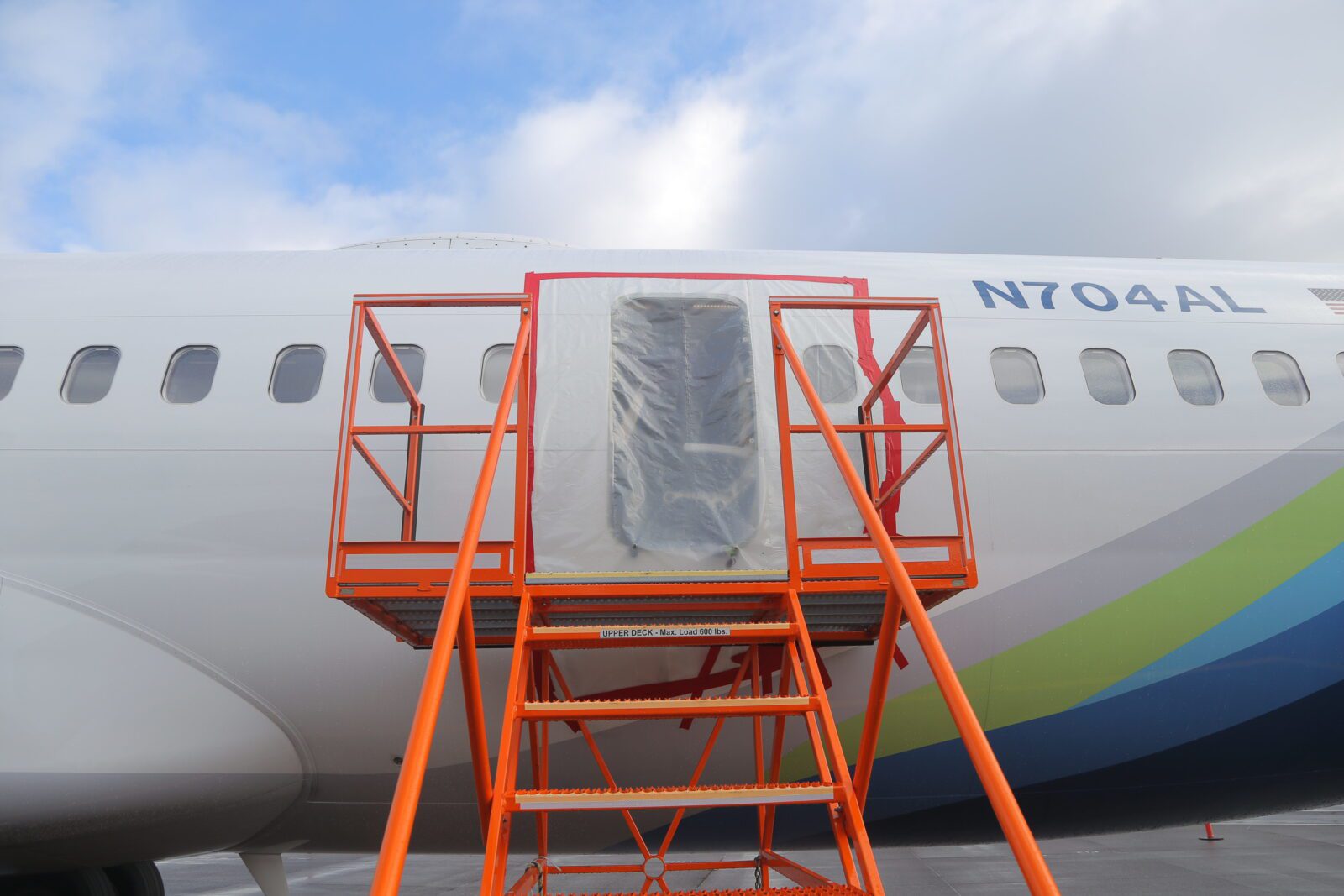
United Airlines has confirmed that it has found loose bolts and other issues affecting emergency exit door plugs on at least five Boeing 737 MAX 9 aircraft in its fleet after it began FAA-mandated inspections following a blowout on Alaska Airlines flight 1282 on Friday evening.
The Chicago-based carrier only began properly inspecting the 79 grounded 737-9 aeroplanes in its fleet on Monday after Boeing finally released a so-called ‘Multi-Operator Message’ which outlines what inspection process affected airlines must carry out to ensure the exit plug is installed correctly.
Shortly after industry publication, the Air Current revealed that United discovered potential issues on five of its 737-9s. United said in a statement that it had “found instances that appear to relate to installation issues in the door plug”.
The airline said examples of these issues include “bolts that needed additional tightening.”
“These findings will be remedied by our Tech Ops team to safely return the aircraft to service,” a United spokesperson explained.
United canceled at least 200 flights due to be operated by its grounded 737-9 fleet on Monday, and the embattled carrier has already proactively axed 121 flights on Tuesday, although further cancellations are expected to be announced in the coming hours.
Alaska Airlines is yet to begin the inspection process of its ground 737-9s and it is still too early to tell whether issues on other grounded aircraft at both United and Alaska will be discovered in the days ahead.
According to the Air Current’s editor-in-chief, Jon Ostrower, the five United aircraft that have been identified as having loose bolts and other issues were delivered to the airline between November 2022 and September 2023.
The Alaska Airlines aircraft which suffered the blowout was delivered factory fresh to the airline in late October 2023.
On Monday, the carrier declined to answer questions about what prior maintenance the plane had undergone in the days and weeks leading up to Friday’s accident, saying it needed to get permission from the National Transportation Safety Board (NTSB) before it could release this information.
There are reports in the weeks leading up to Friday’s accident that pilots had received pressurization warnings, resulting in Alaska Airlines temporarily removing the aeroplane’s so-called ETOPS certification, which is required for twin-engined aircraft which might have to operate with only one operable engine for more than an hour before it reaches a diversion point.
The NTSB has now recovered the door plug which blew out of Alaska flight 1282, and it’s hoped this will provide vital clues as to the cause of the accident.
Mateusz Maszczynski honed his skills as an international flight attendant at the most prominent airline in the Middle East and has been flying ever since... most recently for a well known European airline. Matt is passionate about the aviation industry and has become an expert in passenger experience and human-centric stories. Always keeping an ear close to the ground, Matt's industry insights, analysis and news coverage is frequently relied upon by some of the biggest names in journalism.







